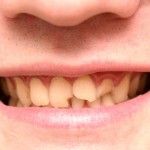
Uncomplicated tooth fractures involving just enamel and dentine are common in children. treatment ranges from composite resin restoration to dental fragment bonding. Tooth fragment reattachment offers a number of advantages the most important of which is aesthetic. A number of different preparation approaches and restorative material and adhesive systems have been suggested.
The aim of this review it Is to assess what is the best tooth fragment reattachment technique for crowns of the fractured anterior teeth.
Methods
Searches were conducted in the PubMed, LILACS, Web of Science, Cochrane, Scopus, Open Grey and Google Scholar databases. Observational studies ( Case reports/series of three or more cases, cross-sectional studies, cohort studies, and in vivo clinical trials) evaluating fractured permanent anterior teeth without restriction regarding date or language were considered. Two reviewers independently selected studies and extracted data. Study quality was assessed independently by two authors using a standardised form. A narrative summary was provided.
Results
- 5 studies involving a total of 246 teeth were included
- 1 study was considered to have a high risk of bias, 4 a moderate risk.
- Tooth fragment reattachment was performed using conventional composite resin, flowable composite resin, or resin cement
- No additional tooth preparation was carried out in 2 studies, in 1 study the fracture line was reinforced with composite resin and in 3 studies a double chamfer was performed after reattaching the tooth fragment.
- The tooth fragment was maintained in physiological solution until reattachment in all studies
Conclusions
The authors concluded: –
simple tooth fragment reattachment was the preferred reattachment technique. An increase in the bond strength between tooth fragment and dentine was observed when an intermediate material was used. Further investigation is needed, using standard follow-up periods and larger samples.
Comments
While the authors have performed a broad literature search only a small number of studies involving a small of teeth have been identified. Follow up periods range from 6 months to 7 years but no overall summary data on failure rates were provided in the review. One of the included studies reported no clinical success after 3 years will all failures occurring in the first 4 months, while another reported 100% clinical success after 3 years. Given the high global prevalence of dental trauma reattachment provides one approach to its treatment and management when the damaged tooth fragment is available. While this review brings together the available literature on this topic it is limited both in volume and quality. Further well reported high quality studies are needed to provide better evidence on the best techniques for tooth fragment reattachment.
Links
Primary Paper
Garcia FCP, Poubel DLN, Almeida JCF, Toledo IP, Poi WR, Guerra ENS, Rezende LVML. Tooth fragment reattachment techniques-A systematic review. Dent Traumatol.2018 Mar 7. doi: 10.1111/edt.12392. [Epub ahead of print] Review. PubMed PMID:29512861.
Original review protocol on PROSPERO
Other references
Catalogue of Bias – Selection Bias
